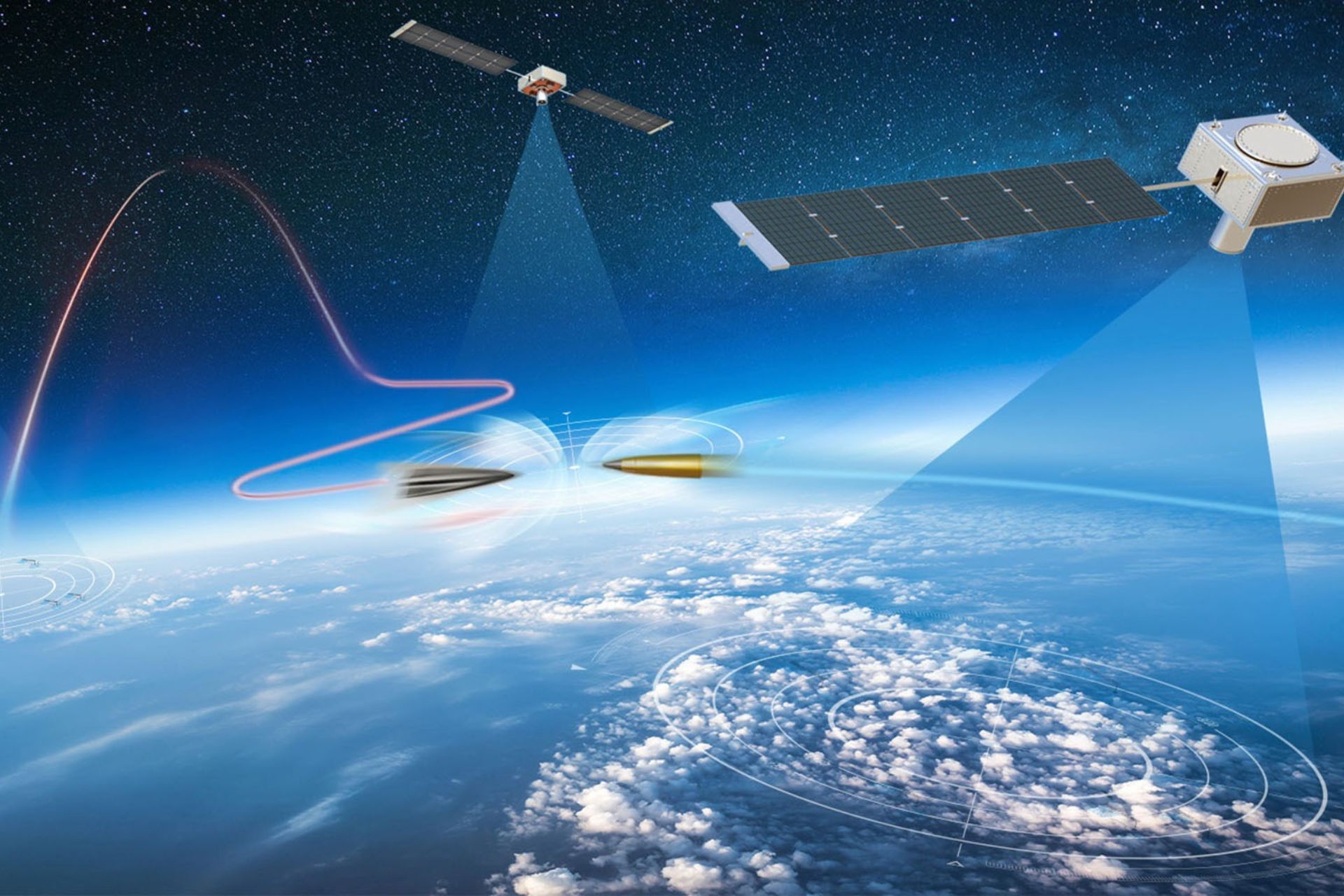iLAuNCH, Northrop Grumman, and Spiral Blue Develop Space-Based Hypersonic Detection System

{loadposition bannertop}
{loadposition sidebarpub}
To neutralize the threat posed by peer adversaries and maintain a strong regional deterrence posture, three Australian partners are developing a sovereign counter-hypersonic surveillance capability, with space providing a critical layer for overall missile defense. iLAuNCH Trailblazer, Northrop Grumman Australia, and Sydney-based SME Spiral Blue are collaborating on this program, according to iLAuNCH CEO Darin Lovett. Together, they plan to build an advanced space surveillance system for missile defense, tailored for deployment on small satellites.Follow Army Recognition on Google News at this link
This mission aims to develop a new sovereign capability for hypersonic missile detection by integrating infrared detection technology with space-based artificial intelligence (AI) and machine learning (ML) data processing techniques (Picture source: Northrop Grumman)
“Together with industry partners Northrop Grumman Australia and Spiral Blue, we will combine state-of-the-art mission simulation capabilities with pioneering imaging and space edge computing technologies to advance space-based hypersonic vehicle surveillance,” said Lovett. “Through projects like these, iLAuNCH significantly contributes to national security and deterrence.”
Hypersonic weapons are highly maneuverable and designed to avoid detection by traditional missile defense systems, such as ground-based radar. Responding to these threats is a global challenge. The past decade has seen substantial progress by many nations in developing hypersonic systems, posing significant risks to Australia’s interests, iLAuNCH points out.
This mission aims to develop a new sovereign capability for hypersonic missile detection by integrating infrared detection technology with space-based artificial intelligence (AI) and machine learning (ML) data processing techniques. Anticipated outcomes include hypersonic vehicle radiance and trajectory modeling, comprehensive design, and rigorous analysis of an infrared electro-optical system, leveraging advanced infrared detectors and space edge AI/ML hardware and algorithms for onboard event detection.
Northrop Grumman’s Parallax Labs will bring model-based systems engineering and advanced simulation capabilities, along with high levels of automation to systems development, integration, and test activities. “Through mission engineering, we plan to rapidly advance promising future operational concepts up the technology readiness level (TRL) ladder. We will harness expertise in hypersonic vehicle signatures, space-based detection technologies, and the use of AI/ML techniques for threat identification from our project partners to develop a discriminating capability for the end user,” said Dr. Dushy Tissa, Northrop Grumman Australia’s Technology Outreach Manager.
These efforts will leverage Spiral Blue’s edge compute capability, which can be reprogrammed remotely. “We are designing a system that, once launched, will serve as a hypersonic detection research platform that can be continuously updated and improved to account for new types of hypersonic events, all enabled through Spiral Blue’s edge computer,” said Spiral Blue Founder and CEO, Taofiq Huq.
By maturing a complete missile detection capability, this iLAuNCH Trailblazer project aims to strengthen defense research in Australia. The initiative seeks to combine expertise in hypersonic vehicle signatures, space-based detection technologies, and AI/ML techniques to provide a discriminating capability for the end user.

{loadposition bannertop}
{loadposition sidebarpub}
To neutralize the threat posed by peer adversaries and maintain a strong regional deterrence posture, three Australian partners are developing a sovereign counter-hypersonic surveillance capability, with space providing a critical layer for overall missile defense. iLAuNCH Trailblazer, Northrop Grumman Australia, and Sydney-based SME Spiral Blue are collaborating on this program, according to iLAuNCH CEO Darin Lovett. Together, they plan to build an advanced space surveillance system for missile defense, tailored for deployment on small satellites.
Follow Army Recognition on Google News at this link
This mission aims to develop a new sovereign capability for hypersonic missile detection by integrating infrared detection technology with space-based artificial intelligence (AI) and machine learning (ML) data processing techniques (Picture source: Northrop Grumman)
“Together with industry partners Northrop Grumman Australia and Spiral Blue, we will combine state-of-the-art mission simulation capabilities with pioneering imaging and space edge computing technologies to advance space-based hypersonic vehicle surveillance,” said Lovett. “Through projects like these, iLAuNCH significantly contributes to national security and deterrence.”
Hypersonic weapons are highly maneuverable and designed to avoid detection by traditional missile defense systems, such as ground-based radar. Responding to these threats is a global challenge. The past decade has seen substantial progress by many nations in developing hypersonic systems, posing significant risks to Australia’s interests, iLAuNCH points out.
This mission aims to develop a new sovereign capability for hypersonic missile detection by integrating infrared detection technology with space-based artificial intelligence (AI) and machine learning (ML) data processing techniques. Anticipated outcomes include hypersonic vehicle radiance and trajectory modeling, comprehensive design, and rigorous analysis of an infrared electro-optical system, leveraging advanced infrared detectors and space edge AI/ML hardware and algorithms for onboard event detection.
Northrop Grumman’s Parallax Labs will bring model-based systems engineering and advanced simulation capabilities, along with high levels of automation to systems development, integration, and test activities. “Through mission engineering, we plan to rapidly advance promising future operational concepts up the technology readiness level (TRL) ladder. We will harness expertise in hypersonic vehicle signatures, space-based detection technologies, and the use of AI/ML techniques for threat identification from our project partners to develop a discriminating capability for the end user,” said Dr. Dushy Tissa, Northrop Grumman Australia’s Technology Outreach Manager.
These efforts will leverage Spiral Blue’s edge compute capability, which can be reprogrammed remotely. “We are designing a system that, once launched, will serve as a hypersonic detection research platform that can be continuously updated and improved to account for new types of hypersonic events, all enabled through Spiral Blue’s edge computer,” said Spiral Blue Founder and CEO, Taofiq Huq.
By maturing a complete missile detection capability, this iLAuNCH Trailblazer project aims to strengthen defense research in Australia. The initiative seeks to combine expertise in hypersonic vehicle signatures, space-based detection technologies, and AI/ML techniques to provide a discriminating capability for the end user.




